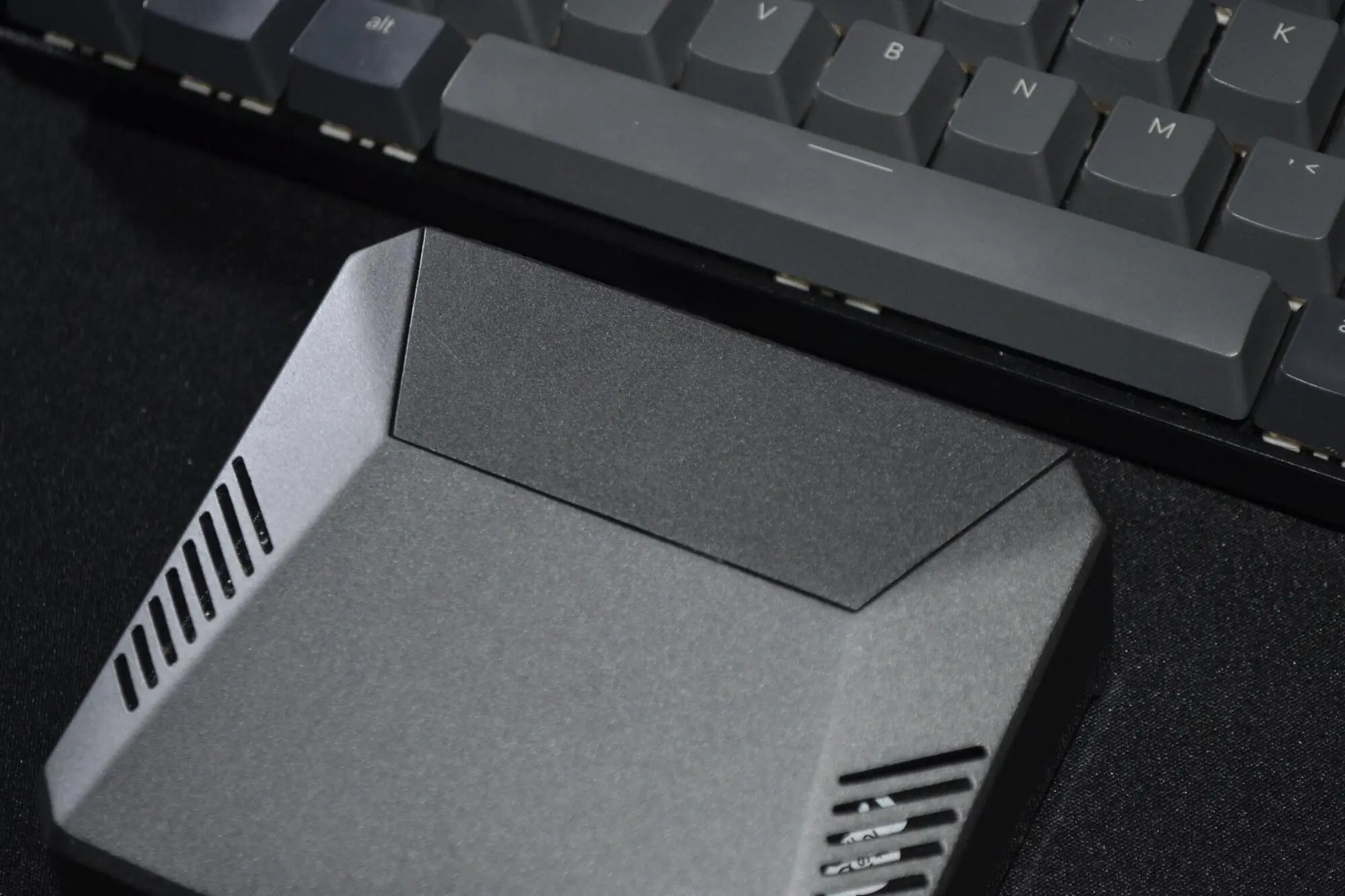For quite some time I've been wanting to run a small homelab with NixOS. I don't host much services myself, however I feel that I can have a lot of fun (and learn a bit) by maintaining my own server. All the services I run on the Cloud™ (Matrix Dendrite and a Nix Binary Cache) could be running on a Raspberry Pi inside my drawer. So that be it!

Setup
At the time of writing my setup looks like this:
- Case Argon ONE M.2
- KingSpec SSD M.2 SATA - 512GB
- Random Flash Drive - 8GB (you can also use a SD Card)
- Raspberry Pi 4 - 8GB
Flashing
Download the NixOS aarch64 image. Personally I went with the unstable branch
as I like to live dangerously but you can choose other versions if you want to.
After that you just need to dd it to your flash drive and boot it:
$ sudo dd if=nixos.img of=/dev/sdX bs=4096 conv=fsync status=progress
Notes:
- Don't forget to extract the image before flashing it.
- If using the Argon One M.2 case, don't boot the USB Drive with your SSD connected. Otherwise your raspberry will try to boot from the SSD and not your Flash Drive/SD Card.
Formatting
You can actually follow the NixOS Manual to partition your hard drive. However I've written a script to help me do this:
# replace /dev/sda with your SSD
export FMT_DISK=/dev/sda
wipefs -a $FMT_DISK
export DISK=/dev/disk/by-id/ata*
parted $FMT_DISK -- mklabel msdos
parted $FMT_DISK -- mkpart primary fat32 0MiB 512MiB # $DISK-part1 is /boot
parted $FMT_DISK -- mkpart primary 512MiB -4GiB # $DISK-part2 is the ext4 partition
parted $FMT_DISK -- mkpart primary linux-swap -4GiB 100% # Swap
mkfs.ext4 -L nixos $DISK-part2
mount $DISK-part2 /mnt
mkfs.vfat -F32 $DISK-part1
mkdir -p /mnt/boot
mount $DISK-part1 /mnt/boot
NixOS Configuration
In order to boot correctly, you need to define some boot options1:
{
boot = {
initrd.availableKernelModules = [ "usbhid" "usb_storage" ];
kernelPackages = pkgs.linuxPackages_rpi4;
kernelParams = [
"8250.nr_uarts=1"
"cma=128M"
"console=tty1"
"console=ttyAMA0,115200"
];
loader = {
raspberryPi = {
enable = true;
version = 4;
};
grub.enable = false;
generic-extlinux-compatible.enable = true;
};
};
hardware.enableRedistributableFirmware = true;
}
Boot firmware
The installer disk has a partition containing the necessary firmwares to boot
(it was on /dev/sda1/ for me). Just copy it to your boot partition.
mkdir /firmware
mount /dev/sda1 /firmware
cp /firmware/* /mnt/boot
Installing
With Channels
The only step left is to install the system:
nixos-install --root /mnt
With Flakes
Another way to install it is to make use of Nix Flakes. This way we can ensure that our build is completely reproducible and/or running the same software version as the other machines.
This is a rather simple process if you already have a repo configured with your
NixOS configurations. First, I need a shell with git and a Nix version that
supports the experimental Flakes commands.
nix-shell -p git nixUnstable
After that I just clone my repository, copy the hardware-configuration.nix
file over and install the system.
# clone the repository
git clone https://git.sr.ht/~glorifiedgluer/dotfiles
cd dotfiles
# copy hardware-configuration.nix
cp /mnt/etc/nixos/hardware-configuration.nix hosts/rpi4/
# install the system
nixos-install --flake .#rpi4